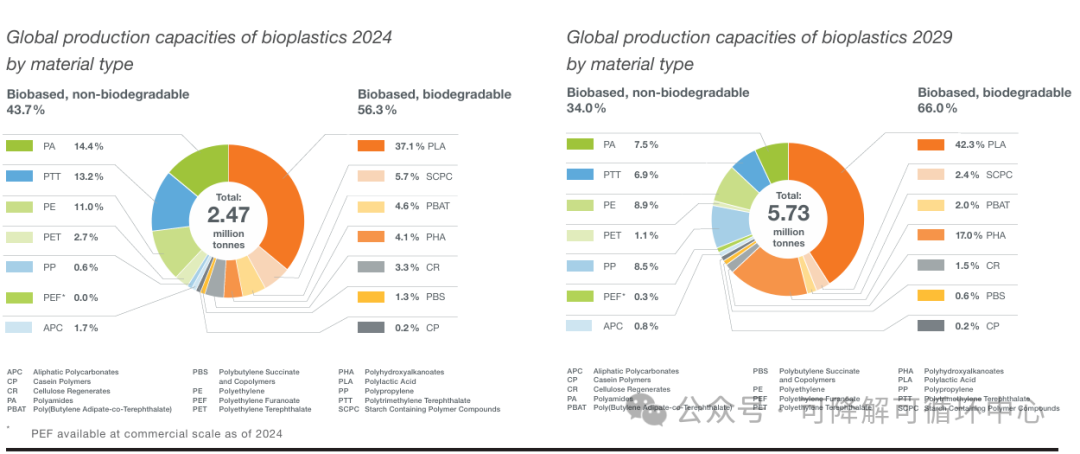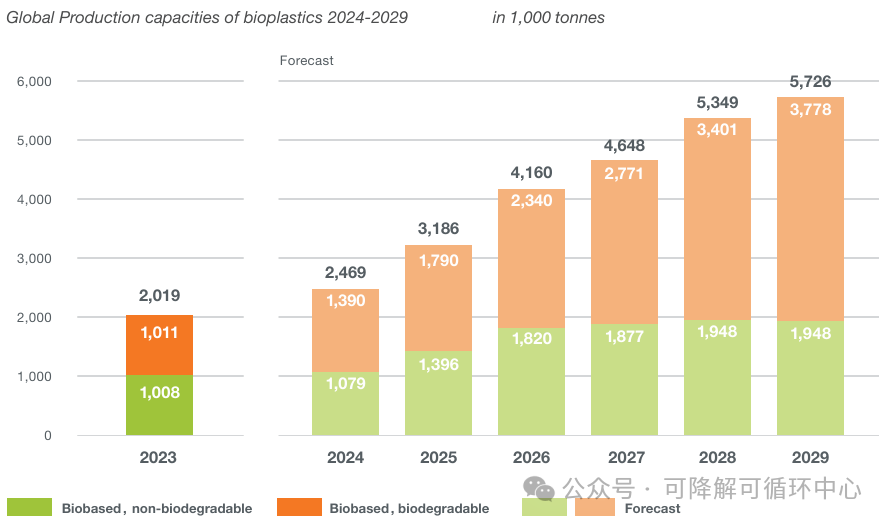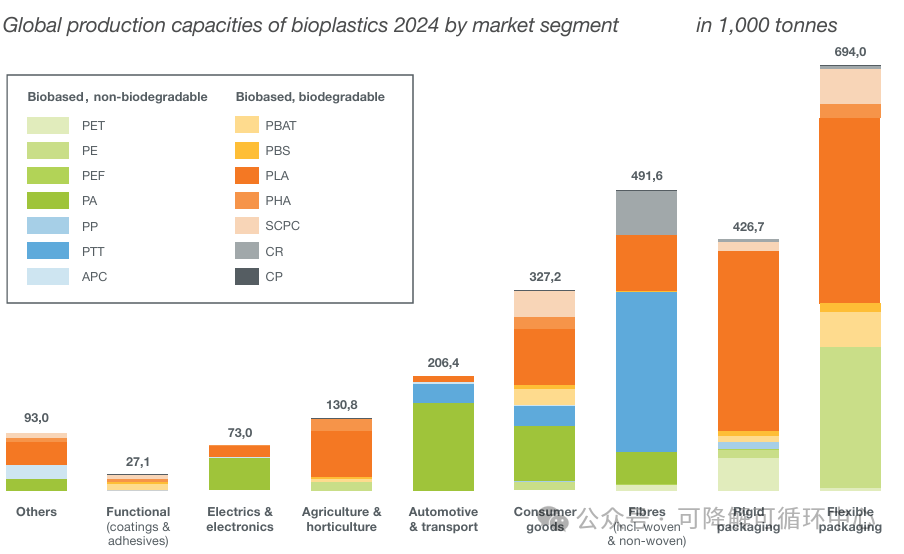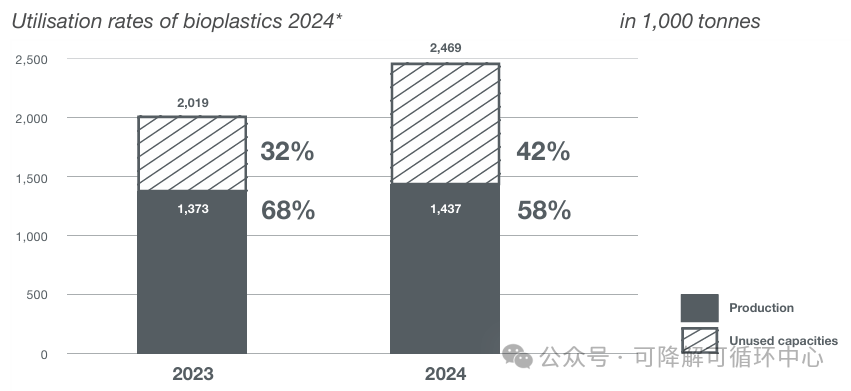 72
72
On December 10, during the EBC24 conference in Berlin, Germany, the European Bioplastics Association (EUBP) released its market Development Update for 2024.
Global plastic production continues to grow steadily. This development is driven by growing demand and the emergence of increasingly complex applications and products. Currently, bioplastics account for about 0.5% of the nearly 414 million tons of plastic produced each year.
Bioplastic alternatives are available for almost all conventional plastic materials and applications. Due to the strong development of bio-based and biodegradable polymers such as polylactic acid (PLA) and polyhydroxyalkanoate (PHA), bio-based polyethylene (PE), and the steady growth of bio-based polypropylene (PP), the capacity will continue to increase significantly over the next five years. According to the report, global bioplastics production capacity will increase significantly from about 2.47 million tons in 2024 to about 5.73 million tons in 2029.
According to the report, global bioplastics production capacity will increase significantly from about 2.47 million tons in 2024 to about 5.73 million tons in 2029.
Hasso von Pogrell, Managing Director of European Bioplastics (EUBP), said: "The growth in bioplastics capacity comes against the backdrop of increasing consumer awareness of the environmental impact of plastic consumption, which not only highlights the resilience of our industry, but also illustrates the importance of our industry in driving sustainable solutions."
Bioplastics are increasingly used in a wide range of areas, from packaging and fibers to consumer goods, automobiles and agricultural products. Packaging remains the largest market segment for bioplastics, accounting for 45% (1.12 million tonnes) of the total bioplastics market by 2024.

 A comparison of capacity with actual production in 2024 shows that the capacity utilization rate of the bioplastics industry is close to 60%. While polymers vary widely in some respects, ranging from 35% to 100%, the average utilization rate in 2024 is 58% (ratio of 1.44 million tons of production to 2.47 million tons of capacity).
A comparison of capacity with actual production in 2024 shows that the capacity utilization rate of the bioplastics industry is close to 60%. While polymers vary widely in some respects, ranging from 35% to 100%, the average utilization rate in 2024 is 58% (ratio of 1.44 million tons of production to 2.47 million tons of capacity).


